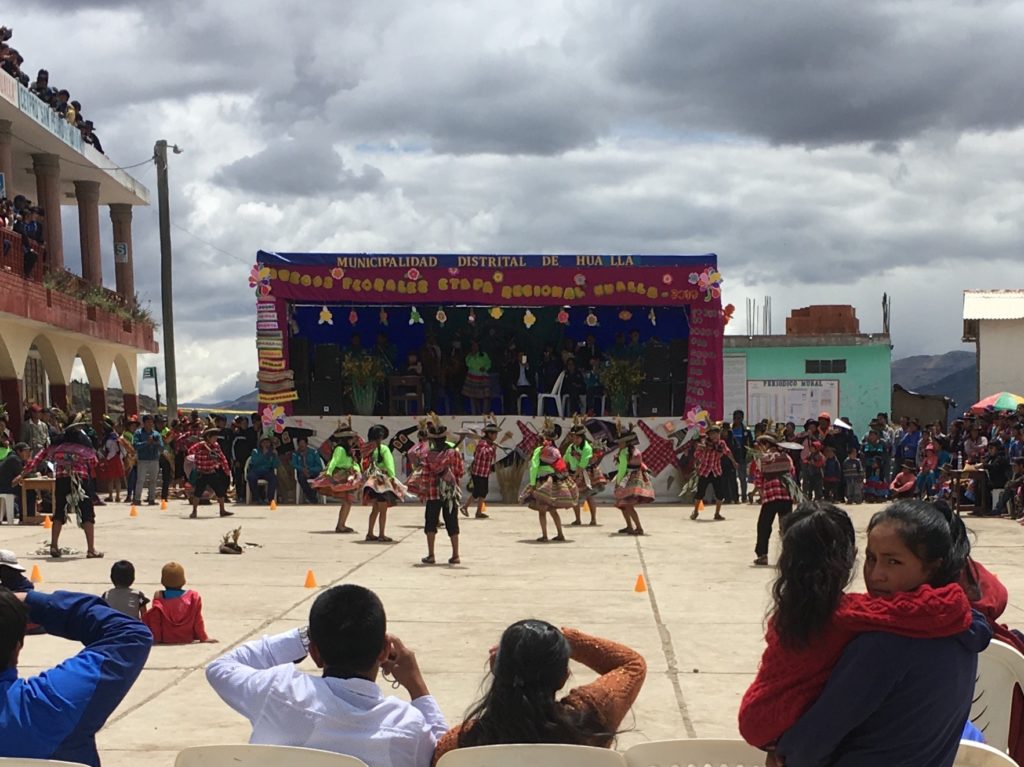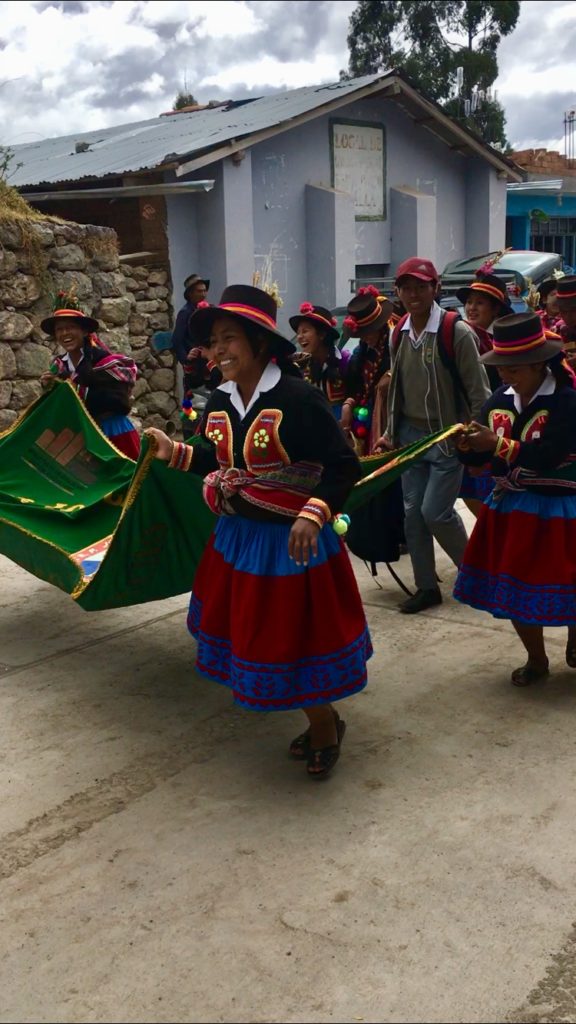
In mid-September I was drawn away from my lab work by the sounds of traditional Andean Huayno music to the plaza of Hualla, Peru, where I am staying during an archaeological field expedition. The pueblo of Hualla is a small town tucked in the mountains of the Ayacucho province of Peru. That day Hualla was hosting a regional baile (dance) competition where children throughout the region performed traditional regional dances. Every dance, costume and corresponding song represents an aspect of Colonial life and labor. For example, one dance represented Colonial mining and another represented Colonial ranchers. The dances were beautifully choreographed, the dancers were beautifully costumed, and the songs were beautifully performed, but the bailes were about more than artistic skill, sportsmanship and entertainment. Through their participation in these bailes girls became storytellers, passing down stories of Colonial life through their performance. While we often think of storytellers as elderly members of a community sharing stories passed down through generations, the bailes allow for younger generations to become the storytellers and cultural keepers. At the competition there was a large audience of people across generations there to watch the bailes and to be reminded of the stories each dance represents.

Participation in the bailes is a long-term commitment for each dancer. For months leading up to the competition boys and girls across the region spent their evenings learning and practicing choreography in their respective city plazas. They, their mothers, and grandmothers sewed the specific costumes required for each dance. Some costumes required more commitment as aspects of it needed to be handwoven on backstrap looms, and other dances required multiple costumes. During one dance two boys changed into a toro costume with a condor on its back, which meant that these boys needed two costumes made for them to wear for the one dance. However, the commitment for the dancers and their families is not seen as a burden, because the bailes hold such an important cultural role. As the dancers I watched compete grow, they will be replaced by younger dancers eager to learn the dances and to become storytellers through their performances.
-Maria Smith
Junior Girl
Girl Museum Inc.
